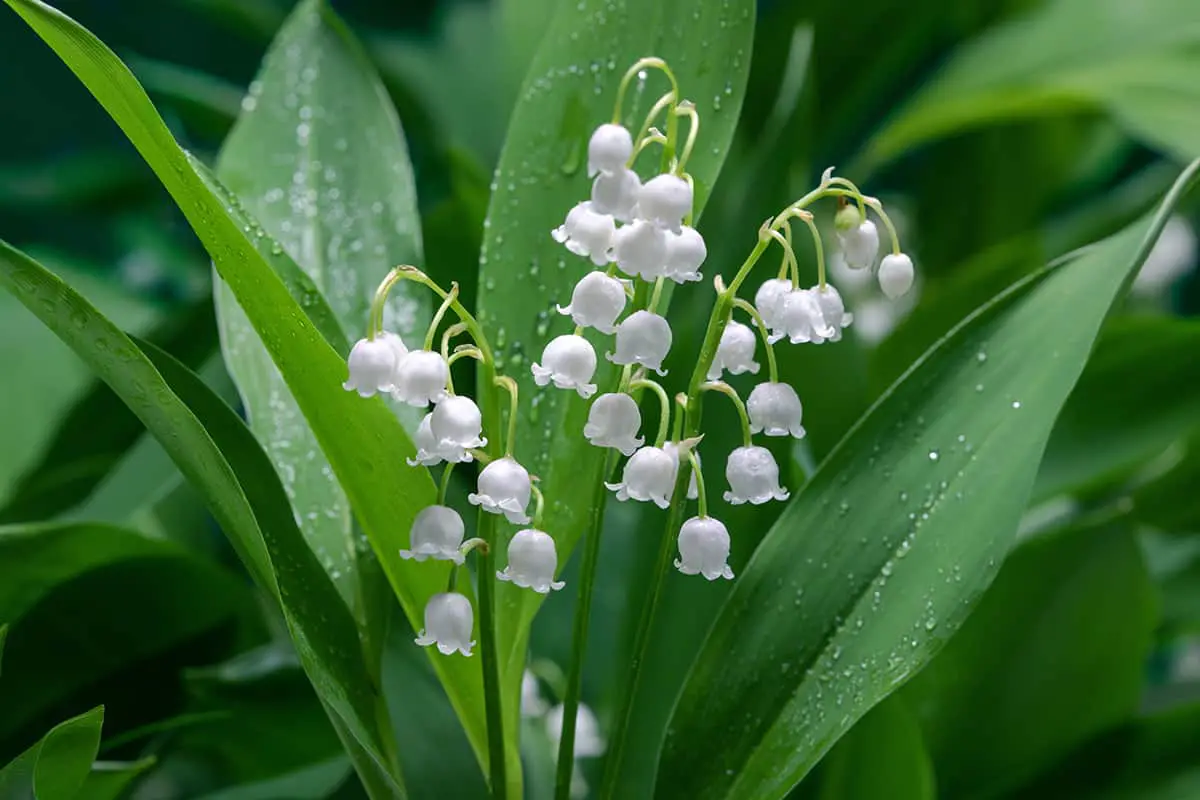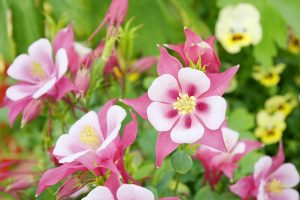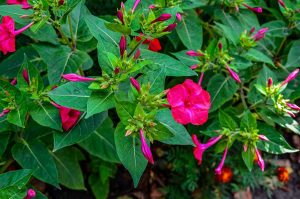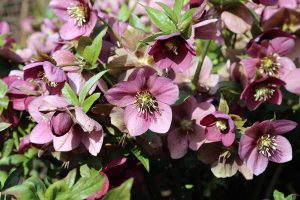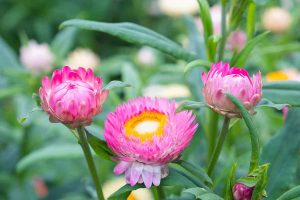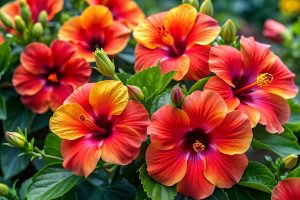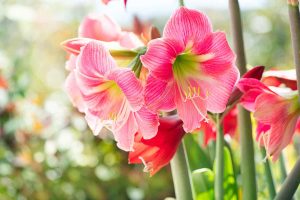If you love the idea of a garden filled with the sweet fragrance of spring, consider planting Lily of the Valley. This charming, low-maintenance plant can thrive in shady spots where other flowers might struggle. With its delicate white bells and lush green leaves, Lily of the Valley quickly carpets the ground, turning a neglected part of your garden into a fragrant spring haven.
| Common Name | Lily of the Valley |
| Botanical Name | Convallaria majalis |
| Family | Asparagaceae |
| History & Origin | Native to Europe and Asia |
| Plant Type | Perennial, ground cover |
| Mature Size | Up to 8 inches tall, 12 inches spread |
| Sun Exposure | Partial to full shade |
| Soil Type | Moist, well-draining, rich |
| Soil pH | Slightly acidic to neutral (6.0 to 7.0) |
| Temperature | Cold-hardy, prefers cooler climates |
| Watering | Keep soil consistently moist |
| Fertilizing | Minimal; use balanced fertilizer in early spring |
| Bloom Time | Late spring |
| Flower Color | White, occasionally pink |
| Hardiness Zone | 2-7 |
| Toxicity | Highly toxic to humans and pets |
| Common Problems | Leaf spot, snails, slugs |
Table of Contents
Light
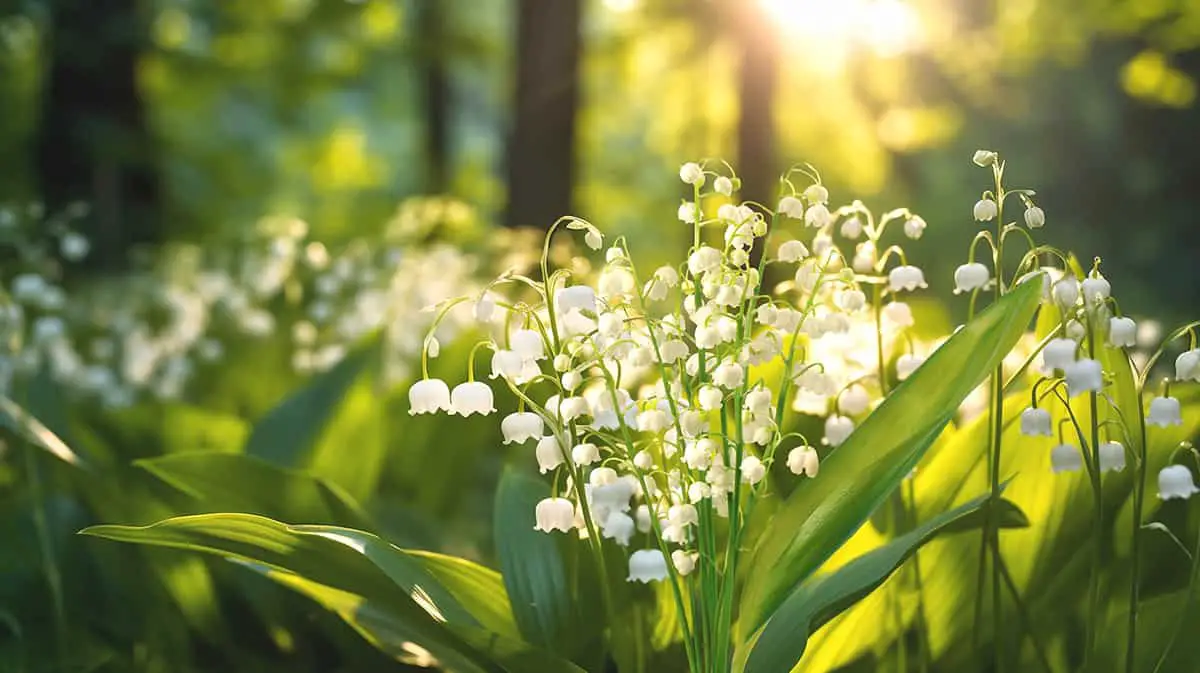
Lily of the valley flourishes in shaded areas. Your garden’s dappled to full shade spots are ideal. These delicate flowers need protection from harsh sun rays that can scorch their leaves.
Find a place where larger plants or trees filter the sunlight. Such spots will mimic the forest undergrowth, the flower’s natural habitat. Morning light with afternoon shade provides a perfect balance. Ensure your chosen location keeps the plants out of intense midday sun.
If you grow lily of the valley indoors, position them well. They must receive bright indirect light away from direct sunlight. A north-facing window often works as a good source of light.
Soil

To grow Lily of the Valley successfully, your soil needs attention. Choose soil that stays moist but is well-drained. Rich, loamy soil is ideal for this plant. You achieve this by adding organic material like compost.
Your soil should be slightly acidic to neutral. A pH level ranging from 6.0 to 7.0 is where Lily of the Valley thrives. You can test your soil’s pH and adjust it if necessary.
Avoid waterlogged conditions. They harm the plant’s roots. Ensure your garden bed or container allows for proper drainage. A raised bed can provide excellent drainage if your natural soil does not.
To support their eager growth habit, enrich your soil with nutrients. Add a balanced, slow-release fertilizer at the beginning of the growing season. This provides the necessary support for their delicate, fragrant blooms.
Water
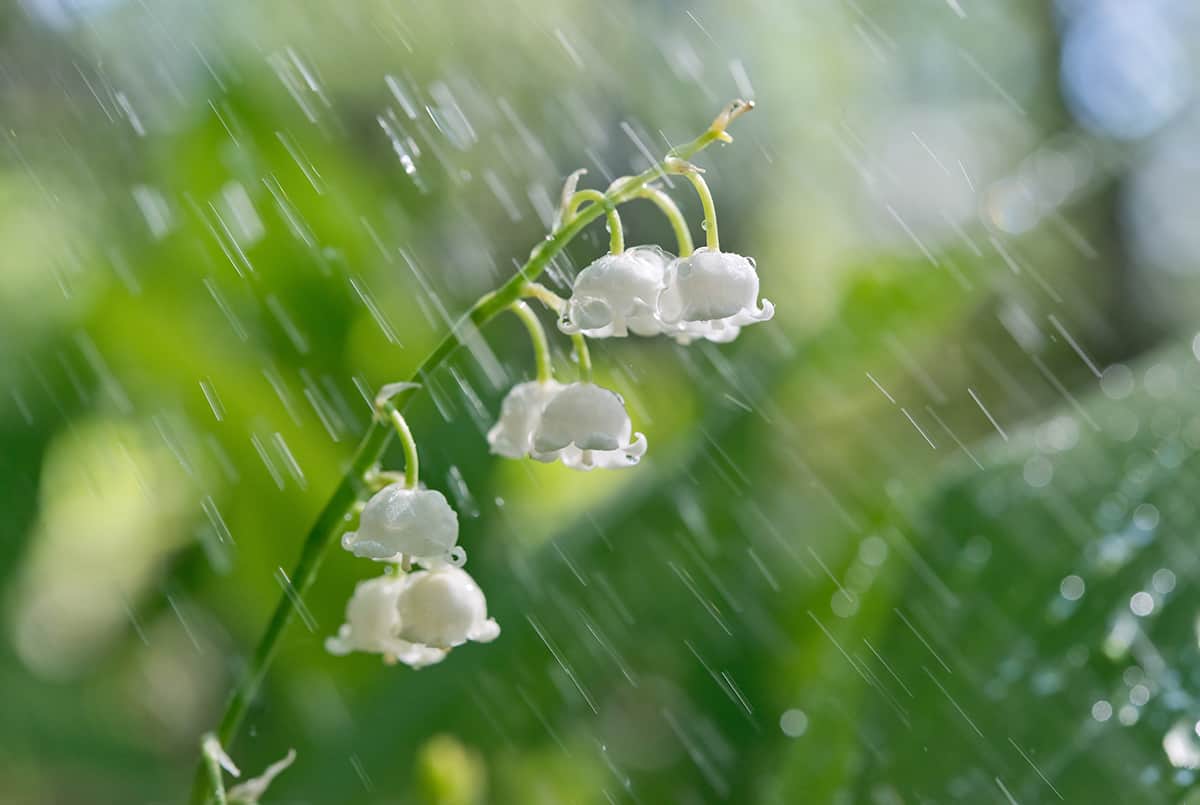
Lily of the Valley thrives with consistent moisture. You must ensure the soil remains moist but well-drained. Overwatering can lead to root rot, so it’s crucial to avoid soggy conditions.
During dry periods, water your plants deeply. This approach encourages strong root development. Aim to provide water once or twice a week, adjusting for rainfall.
Mulch can help retain soil moisture. A layer of organic mulch around your Lily of the Valley will also keep the roots cool. Remember, though, to leave some space around the plant stems to prevent rot.
Temperature and Humidity
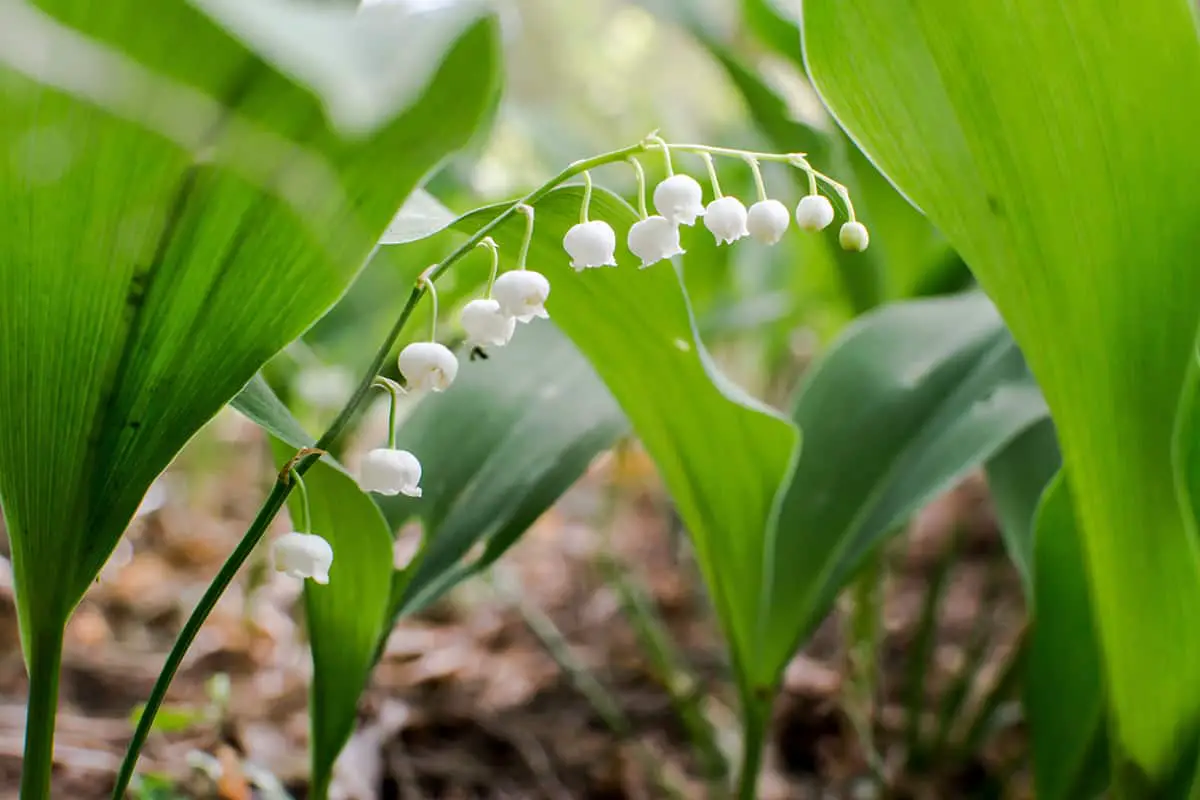
Lily of the Valley thrives in cooler climates. Avoid exposure to temperatures above 75°F, as this can impede growth. Your plants prefer consistent moisture in the air without becoming too damp or too dry. Aim to maintain moderate humidity levels to keep your plants healthy.
In particularly dry environments, consider using a humidifier or regularly misting your plants. This simulates the natural humidity they would experience outdoors. During hot spells, provide shade to prevent temperature stress. Protect them with mulch or a similar cover that keeps the soil cool.
Monitor the environment around your Lily of the Valley frequently. If indoor temperatures rise or you notice a lack of humidity, take action. Adjust your heating or cooling systems to ensure the right conditions. Watch for signs of stress such as wilting or yellowing leaves, which can indicate incorrect temperature or humidity levels.
Remember that these plants originate from cooler, woodland areas. Thus, your Lily of the Valley will flourish when you replicate these conditions at home.
Fertilizer
This plant thrives with a low-nitrogen option. Look for products marked as complete fertilizers that include phosphorus, such as 5-10-15 or 8-8-8. Your Lily of the Valley will respond well to these.
Apply fertilizer as you prepare the planting area. Mix it into the top 6 inches of soil. This method ensures nutrients are available to the roots of your plants. A second application in the growing season can boost the plant’s performance, leading to healthier growth.
Knowing when to fertilize is just as vital. Start in early spring as new growth appears. This initial feeding gives the plants strength after the winter dormancy. A follow-up during the midsummer period sustains them through their blooming phase. Avoid over-fertilization; it can do more harm than good.
Remember to water the soil after adding fertilizer. It helps to distribute the nutrients evenly and promotes uptake by the plant’s roots.
Propagation
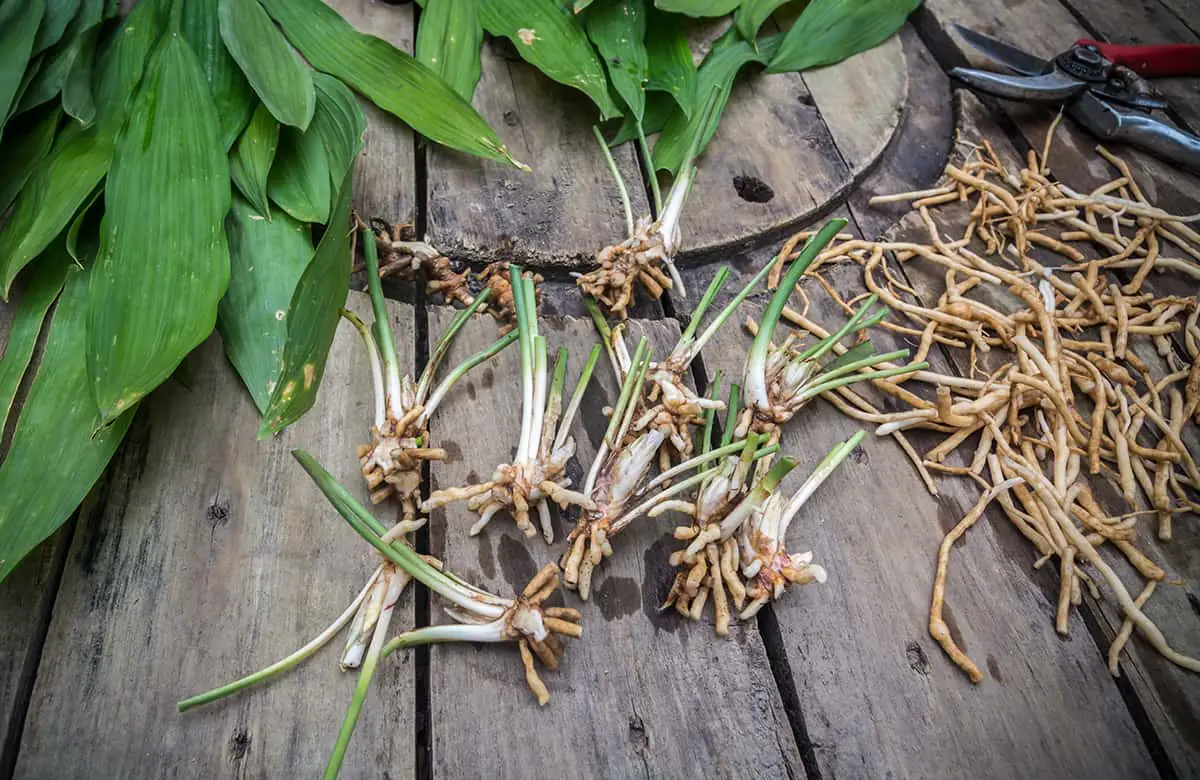
Lily of the valley plants multiply through two main methods: division and pips. To propagate these plants, you must separate the root systems or use the pips, which are buds on the roots that grow into new plants.
Locate the clumps you wish to divide in spring or fall. Gently separate the roots, ensuring each section has at least one pip or shoot. This straightforward process will increase your garden’s size and encourage healthy growth.
Plant the separated pieces right away, keeping the soil moist. Place them about a half-inch deep in well-drained soil. Shade is essential for your lily of the valley as it thrives in cooler, shaded areas. Remember to water the new plants regularly until they establish themselves.
For a garden update, dividing helps maintain the health and vigor of your plants.
Pruning Lily of the Valley
When you grow Lily of the Valley, pruning becomes an essential part of plant care. During spring, after blooming ends, it’s important to remove spent flower stalks. This action prevents seed formation. Without seeds, your plants can put more energy into root and foliage growth.
Pruning also includes cutting back leaves. You should do this only when they start to yellow, typically in fall. Yellow leaves are a sign that the plant is ready to rest for the winter. By removing them, you help maintain a tidy appearance in your garden.
Sometimes, Lily of the Valley can spread more than you’d like. To control its growth, trim the rhizomes. Do this with care to prevent unwanted damage to your plant.
Remember, clean your pruning tools before and after use. This practice prevents the spread of disease among your plants.
Potting and Repotting
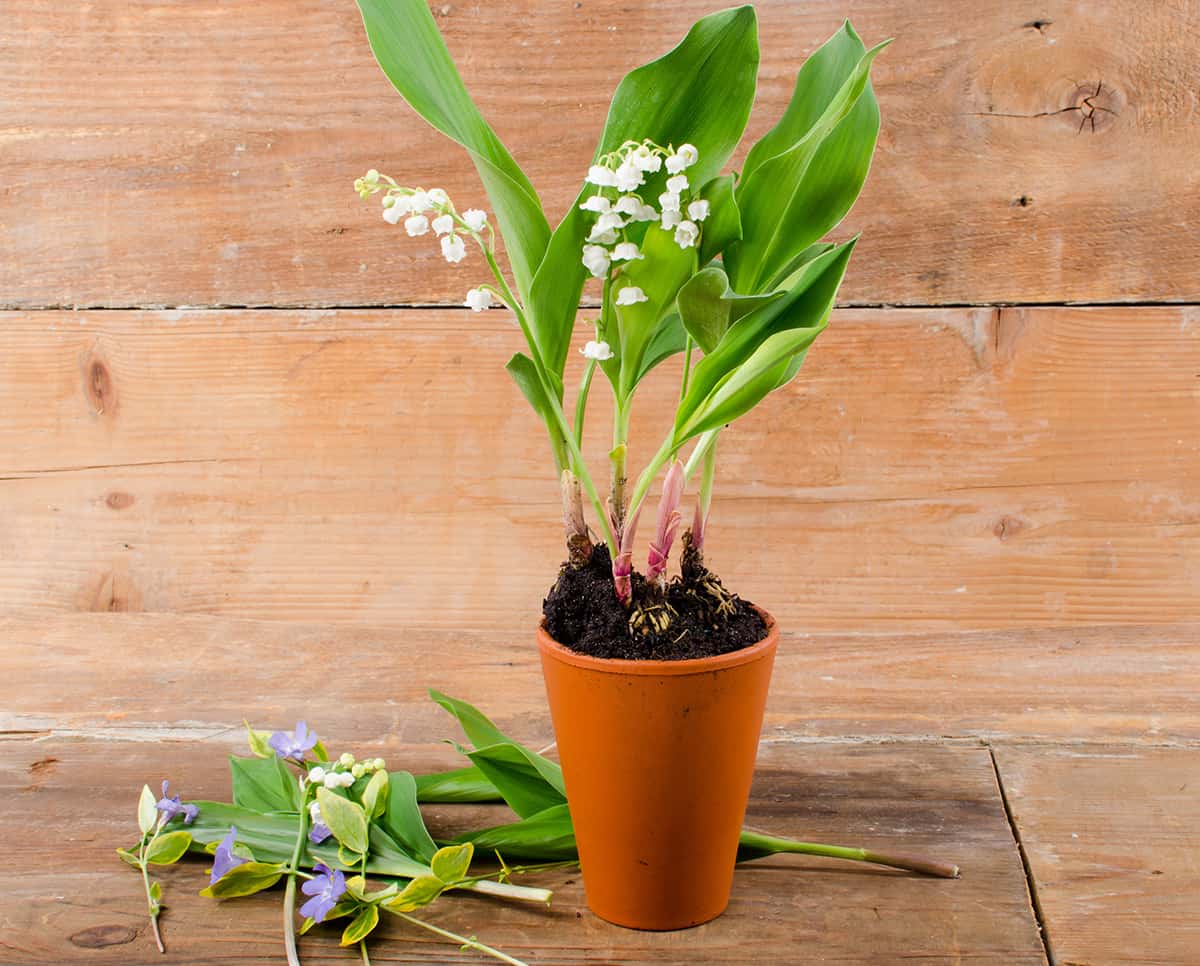
When potting Lily of the Valley, choose a container with good drainage. This plant thrives in well-drained soil that is high in organic matter. Begin by covering the container’s drainage holes with broken pottery shards. This step prevents soil from escaping and ensures only excess water drains.
Fill the pot with a mix of peat, compost, and regular potting soil. The goal is to create an environment that retains moisture yet allows excess water to drain. Position your Lily of the Valley’s rhizomes just below the soil surface, spaced about two inches apart. Their roots need space to spread.
After planting, water your Lily of the Valley thoroughly. Keep the soil consistently moist, but be wary of overwatering. It is crucial that the soil never becomes soggy, as this can lead to root rot.
Repotting is required when you notice signs of overcrowding, such as dense clumps of foliage or decline in flowering. You should repot these plants every three to four years to refresh the soil and allow more room for growth. When repotting, gently divide the rhizomes, and replant them using the same soil mixture recommended for potting.
Careful handling during repotting minimizes stress and promotes a quick return to vigorous growth. Remember to place your freshly potted Lily of the Valley in a location with dappled sunlight, mimicking its natural environment for best results.
Common Problems & Troubleshooting
When you grow Lily of the Valley, you might face diseases such as anthracnose and crown rot. These ailments occur mostly in wet conditions. If your plants show signs of these, improve drainage and reduce leaf wetness to prevent further issues.
Lily of the Valley might also attract pests like the black vine weevil. You’ll notice damage to the roots and foliage. To manage these pests, encourage natural predators or consult with your local nursery for appropriate treatments.
Sometimes, leaves may turn yellow or brown. This can be due to various factors like poor soils or exposure. Ensure they’re planted in organically rich and moist soil and positioned in partial to full shade for optimal health.
If you observe leaf blotching, this is often a sign of fungal infection. Reduce the spread by removing affected foliage. Regularly inspect your plants to catch these problems early, ensuring continued health and enjoyment of your Lily of the Valley.
Lily of the Valley Varieties to Grow
When choosing Lily of the Valley to plant in your garden, you have several wonderful varieties. Each brings something special that may suit your landscape aesthetics or growing conditions.
Convallaria Majalis ‘Rosea’
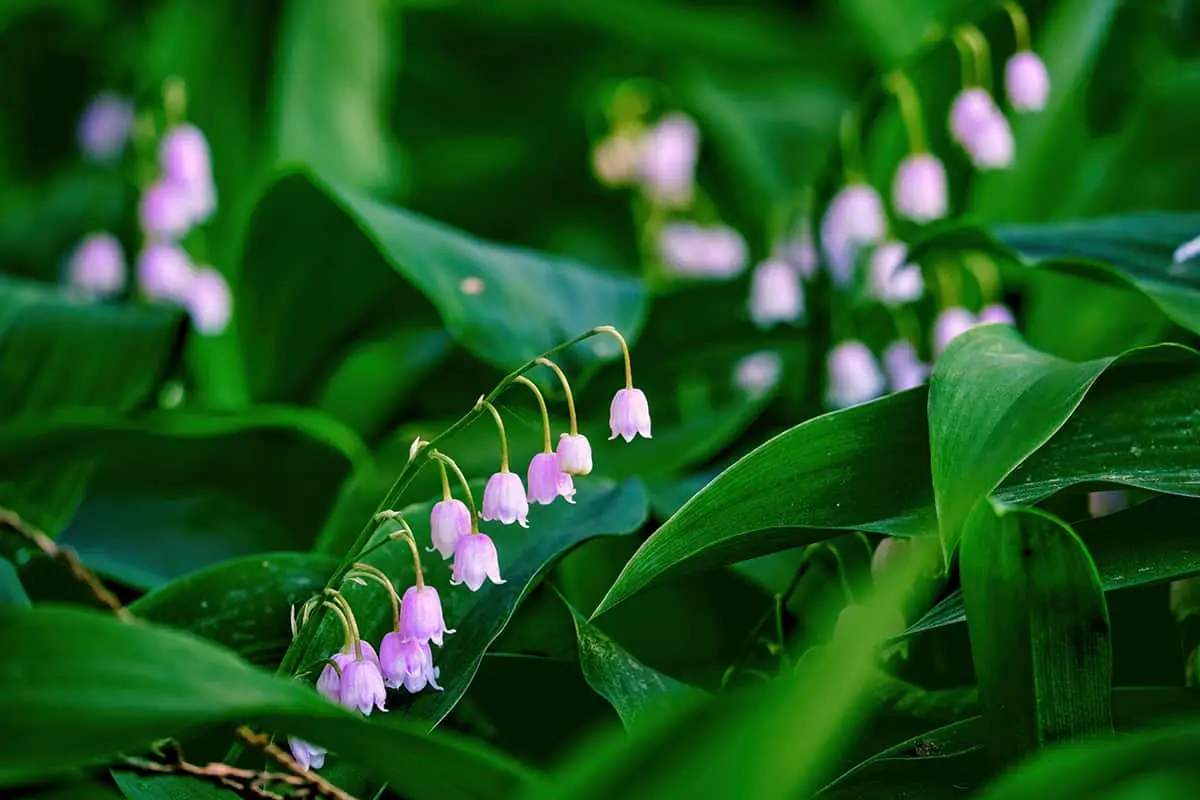
The ‘Rosea’ variety of Lily of the Valley offers charming pink flowers. They bring a soft color contrast to the typical white blooms. You’ll enjoy its fragrant, bell-shaped flowers in spring.
Convallaria Majalis ‘Albostriata’
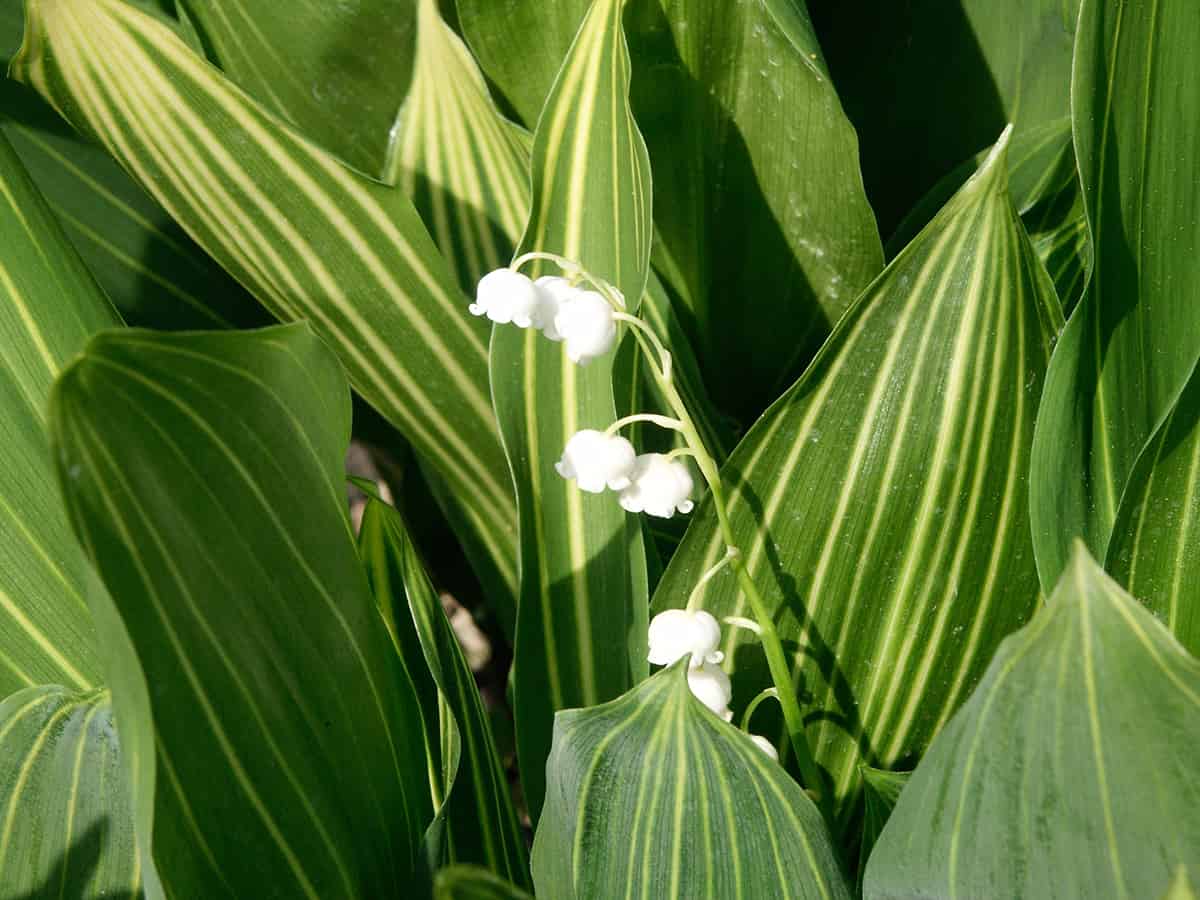
‘Albostriata’ stands out with its striking leaves, featuring white variegated stripes. Not only do you get the Lily of the Valley’s signature scent, but also a unique foliage twist that can brighten shady corners.
Convallaria Majalis ‘Fortin’s Giant’
For a bolder display, ‘Fortin’s Giant’ offers large flowers and robust growth. This variety is a great pick if you’re aiming for a standout ground cover that can handle a range of shade conditions.
Convallaria Majalis ‘Hardwick Hall’
‘Hardwick Hall’ showcases leaves with creamy edges, which remain attractive beyond the flowering season. This Lily of the Valley variety adds a touch of elegance to your shade garden all year long.
